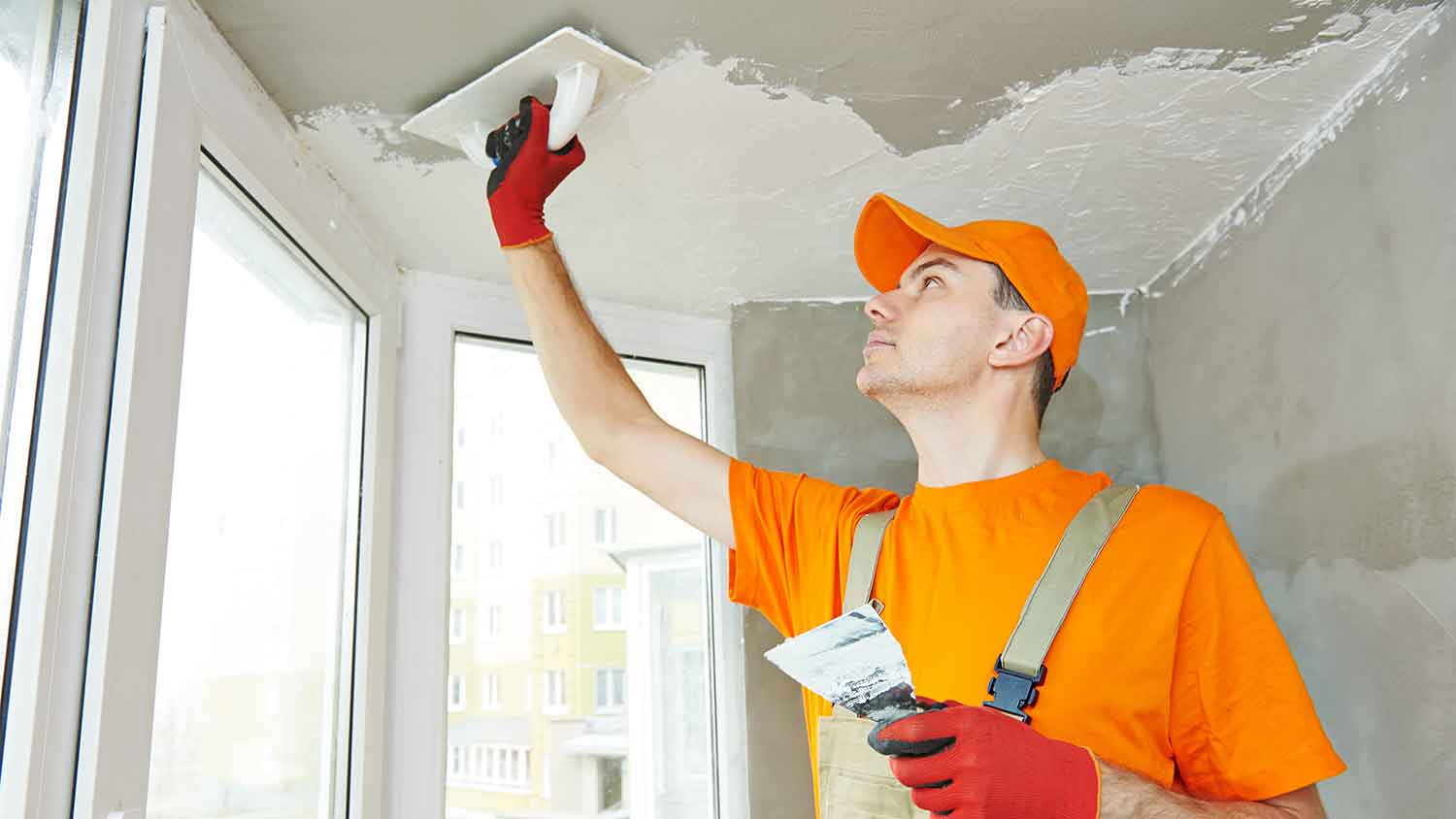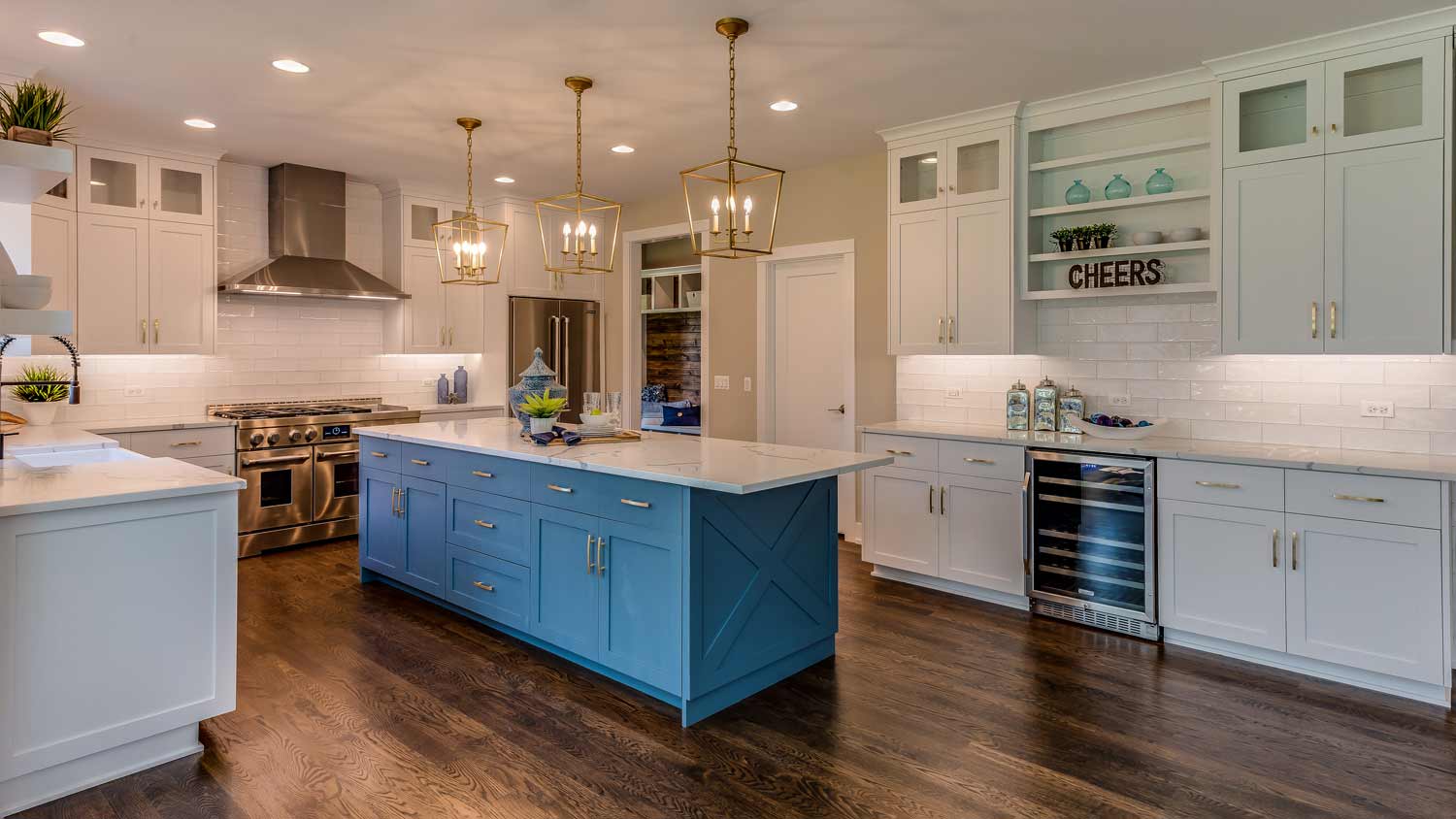
Building permits are essential. Here’s everything you need to know about building permit costs to budget accordingly for your building project.
Keep your guests looking up


Textured ceilings are a modern alternative to outdated popcorn ceilings.
Both ceiling types can provide sound-proofing properties but may not reflect light well.
Popcorn ceilings may contain asbestos and require professional help with removal.
Adding visual interest to a room comes in many forms, and one choice many homeowners consider is ceilings. Two types of ceiling styles—popcorn ceilings and textured ceilings—may seem similar, but actually have some important differences. Here’s what to know about popcorn ceilings versus textured ceilings.

Popcorn and textured ceilings can add visual interest to a room but differ significantly in appearance, application, and maintenance. Understanding these key differences can help you choose the best option for your space or understand its use in home design.
| Popcorn Ceilings | Textured Ceilings |
|---|---|
| Rough and bumpy texture | Can create a variety of patterns |
| May contain asbestos | Does not contain asbestos |
| Largely considered outdated | Modern option |
| Difficult to clean and repair | Easier to maintain if texture is smooth |

Popcorn ceilings feature a bumpy and uneven texture and were popular in mid-century homes from the 1950s to the 1980s. However, the design has lost appeal as contemporary, streamlined designs have become more desired. For that reason, it's rare for a new build to include popcorn ceilings. However, in older homes, popcorn ceilings absorb light, give rooms a darker ambiance, and feature sound-dampening qualities that help minimize noise.
Textured ceilings are created from various design options, including understated patterns like knockdown or orange peel or more dramatic swirls or slap brush textures. They are considered contemporary, making them popular in modern home designs. Some textured ceiling choices can reflect more light than popcorn ceilings to brighten a room. The level of sound absorption depends on the specific texture type and depth, but some are known to have acoustic advantages.
Popcorn ceilings are made from a spray-on mixture that includes materials like Styrofoam, polystyrene, or vermiculite, creating their signature rough, bumpy appearance. One of the major concerns with popcorn ceilings is the potential for asbestos, which was commonly used in the mixture before the 1980s for its fire-resistant properties. Asbestos exposure poses serious health risks when its fibers become airborne, leading to lung diseases like mesothelioma. If a popcorn ceiling was installed before asbestos regulations, professional testing and removal are required to mitigate these risks.
Textured ceilings are made from joint compound or plaster and applied by hand or with specialized tools to create various patterns. Unlike popcorn ceilings, they're less likely to contain asbestos. However, older textured ceilings might still warrant testing if they were installed during the same era as popcorn ceilings.

A spray-on method with the materials is used to create popcorn ceilings. The application process is quick but doesn't allow for the personalization that other ceiling finishes provide. Removing popcorn ceilings can be particularly challenging, especially if asbestos is involved. Scraping off the texture is both messy and labor-intensive and requires proper removal using specialized equipment and professional help to ensure asbestos is handled safely.
Texture ceilings are applied either by hand or with tools like trowels and brushes. The process takes time and skill but offers more design flexibility. Removing textured ceilings is easier than popcorn ceilings, as they don’t carry the same asbestos-related health risks. Depending on the texture style, removal may involve scraping, sanding, or applying a smoothing layer of joint compound.
Popcorn ceilings are notoriously difficult to maintain because the uneven surface easily traps dust, dirt, and cobwebs. The fragile texture is also prone to crumbling if scrubbed or vacuumed too aggressively. Repairs are also challenging, as matching the original popcorn texture is difficult and could lead to visible differences.
Textured ceilings are easier to maintain, especially when the texture is smooth. Some intricate patterns can still gather dust, but isn't nearly as challenging as popcorn ceilings. Repairs on textured ceilings blend more seamlessly, making touch-ups less noticeable.
This company does excellent work. The carpentry work is outstanding and we were very pleased with the final results. The only drawback is they are very expensive. The craftsmen that did our work Al and Micah were extremely pleasant to work with and offered useful suggestions any time we ran...
JF gave us a very detailed proposal for all the work to be performed. The estimator took time and asked if we wanted additional work besides painting - replacing rotten wood sills, e.g. They did all the carpentry beautifully and pointed out where we should do maintenance and where we could...
Excellent work; great attention to detail; makes good suggestions but always goes along with what the customer requests; clean and tidy; intelligent; very reasonable rates. I would definitely hire him again for other home projects. He can do a variety of different jobs including: drywall,...
I WAS VERY IMPRESSED BY THE FELLOW WHO GAVE ME AN ESTIMATE, MR. ROGER BREWER. HE WAS PROFESSIONAL, FRIENDLY AND THOROUGH. HE ALSO GAVE ME TIPS ON PICKING THE BEST CONTRACTOR, EVEN THOUGH THEY MIGHT HAVE LED ME TO CHOOSE ANOTHER PAINTER. I WOULD HAVE HIRED HIM, BUT CHOSE ANOTHER COMPANY...
From average costs to expert advice, get all the answers you need to get your job done.

Building permits are essential. Here’s everything you need to know about building permit costs to budget accordingly for your building project.

The cost to frame a house can vary depending on the size of your home, the structure you’re building, and your materials. Keep reading to learn how much framing your house might cost.

Going from an undeveloped plot to your dream home can be expensive. Learn about the cost to develop land and what factors can affect your total.

As you ring in the new year, you may wonder: What are the top home improvement ideas of 2025? Read on for a full breakdown of in-demand projects on the horizon.

How much of a tip is enough when tipping contractors? We cover which contractors you should tip, how much that tip should be, and when you should avoid tipping.

If you’re replacing your roof or flooring, you might be wondering, “How much plywood do I need?” The answer comes through a simple calculation.